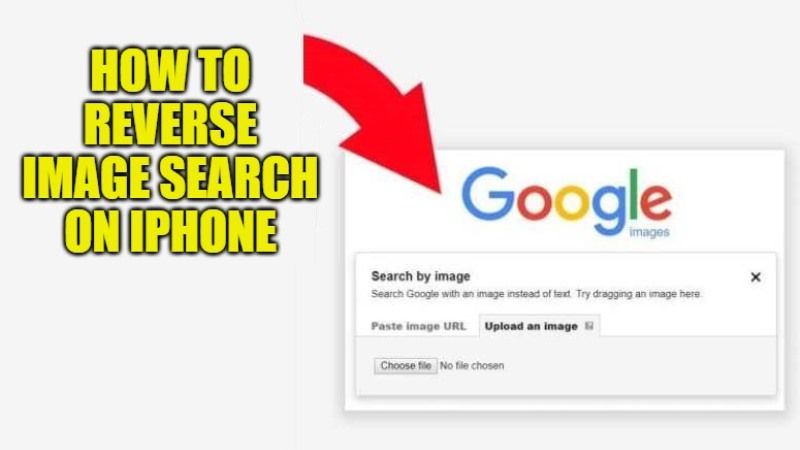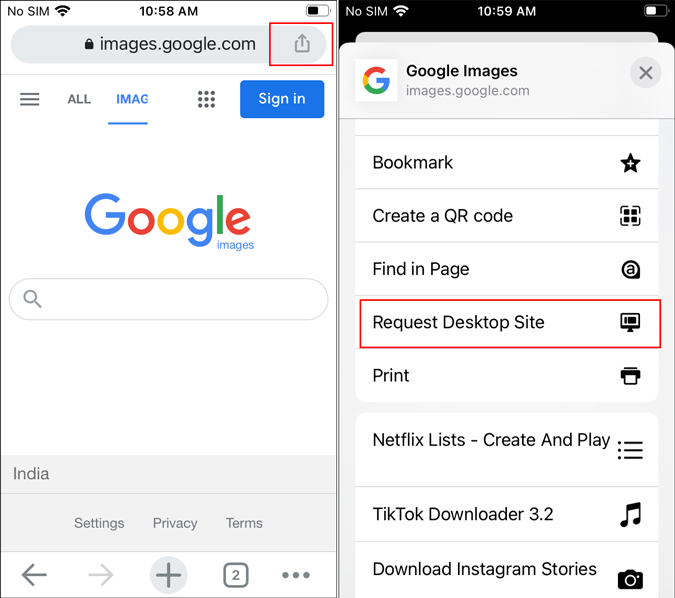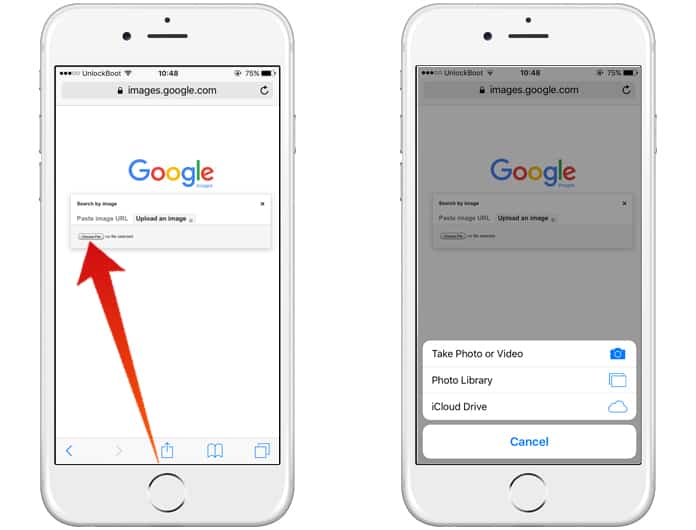What is Reverse Image Search and How Does it Work?
Reverse image search is a powerful technology that allows users to search for images based on visual content, rather than keywords. This innovative feature has been gaining popularity in recent years, and Google’s reverse image search is one of the most widely used and effective tools available. On iPhone, Google’s reverse image search feature can be accessed through the Google app or Google Chrome browser, making it easily accessible to millions of users.
The process of reverse image search is relatively simple. When a user uploads an image or enters the URL of an image, the algorithm analyzes the visual content of the image and searches for similar images across the internet. This technology uses advanced algorithms and machine learning to identify patterns, shapes, and colors within the image, allowing it to find exact or similar matches.
Google’s reverse image search feature on iPhone is particularly useful for identifying unknown objects, verifying image authenticity, and finding similar images. For example, if a user comes across an image of a product they like but don’t know the name of, they can use reverse image search to find similar products or identify the exact product. Similarly, if a user wants to verify the authenticity of an image, they can use reverse image search to find the original source of the image or identify similar images that may indicate the image has been manipulated.
The benefits of reverse image search on iPhone are numerous. It can save users time and effort by providing quick and accurate results, and it can also help users discover new products, services, or information that they may not have found otherwise. Additionally, reverse image search can be a useful tool for researchers, students, and professionals who need to verify the accuracy of images or find specific information.
Overall, Google’s reverse image search feature on iPhone is a powerful tool that can be used in a variety of ways. By understanding how it works and how to use it effectively, users can unlock the full potential of this innovative technology and discover new ways to search and find information online.
How to Use Google Reverse Image Search on Your iPhone
To use Google reverse image search on your iPhone, follow these simple steps:
Step 1: Open the Google app or Google Chrome browser on your iPhone. You can find the Google app on your home screen or in the App Library, and Google Chrome is available for download from the App Store.
Step 2: Tap the camera icon in the search bar to access the reverse image search feature. This icon is usually located on the right side of the search bar.
Step 3: Upload the image you want to search for. You can do this by taking a new photo, selecting an image from your camera roll, or entering the URL of an image.
Step 4: Wait for the algorithm to analyze the image and provide search results. This may take a few seconds, depending on the complexity of the image and the speed of your internet connection.
Step 5: Interpret the search results. Google reverse image search will provide you with a list of similar images, as well as information about the image, such as its origin, size, and format.
Tips for using Google reverse image search on iPhone:
Use high-quality images for best results. The algorithm works best with clear, well-lit images that are in focus.
Use the correct image format. Google reverse image search supports a variety of image formats, including JPEG, PNG, and GIF.
Experiment with different search filters. Google reverse image search allows you to filter search results by size, color, and type, which can help you narrow down your search.
By following these steps and tips, you can get the most out of Google reverse image search on your iPhone and unlock the full potential of this powerful feature.
Google reverse image search on iPhone is a convenient and easy-to-use feature that can be accessed from anywhere, at any time. Whether you’re a student, researcher, or simply someone who loves to explore the internet, this feature is sure to become an essential tool in your online toolkit.
Why You Need Reverse Image Search on Your iPhone
Reverse image search on iPhone is a powerful tool that can be used in a variety of ways. One of the most practical applications of reverse image search is identifying unknown objects. Have you ever seen an image of a product or a place and wondered what it was? With reverse image search, you can upload the image and find out more information about it.
Another useful application of reverse image search is verifying image authenticity. In today’s digital age, it’s easy to manipulate images and spread misinformation. Reverse image search can help you verify the authenticity of an image by finding the original source of the image or identifying similar images that may indicate the image has been manipulated.
Reverse image search can also be used to find similar images. For example, if you’re looking for a specific type of product or a particular style of clothing, you can upload an image of the product or clothing and find similar images. This can be a great way to discover new products or styles that you may not have found otherwise.
In addition to these practical applications, reverse image search can also be used for educational purposes. Students and researchers can use reverse image search to find images related to their studies or research. For example, a student studying art history can use reverse image search to find images of famous paintings or sculptures.
Google reverse image search on iPhone is a convenient and easy-to-use feature that can be accessed from anywhere, at any time. Whether you’re a student, researcher, or simply someone who loves to explore the internet, this feature is sure to become an essential tool in your online toolkit.
By using reverse image search on iPhone, you can unlock the full potential of this powerful feature and discover new ways to search and find information online. With its practical applications, educational uses, and convenience, reverse image search is a must-have feature for anyone with an iPhone.
Alternative Reverse Image Search Apps for iPhone
While Google’s reverse image search feature is a powerful tool, there are other alternative apps available for iPhone that offer similar functionality. Some of these apps include TinEye, Reversee, and CamFind.
TinEye is a popular reverse image search app that allows users to search for images based on visual content. It has a large database of images and can identify objects, people, and places within an image. TinEye also offers a browser extension and a desktop app, making it a versatile tool for reverse image search.
Reversee is another reverse image search app that uses AI-powered technology to identify images. It allows users to upload images or enter the URL of an image to search for similar images. Reversee also offers a feature to search for images based on color, shape, and texture.
CamFind is a reverse image search app that uses computer vision technology to identify objects within an image. It allows users to take a photo or upload an image to search for similar images. CamFind also offers a feature to search for images based on color, shape, and texture.
Comparison of alternative reverse image search apps:
All three apps offer similar functionality to Google’s reverse image search feature, but with some differences. TinEye has a larger database of images, while Reversee and CamFind offer more advanced features such as color, shape, and texture search.
When choosing an alternative reverse image search app, consider the following factors:
Database size: Look for an app with a large database of images to increase the chances of finding a match.
Advanced features: Consider an app that offers advanced features such as color, shape, and texture search to refine your search results.
User interface: Choose an app with a user-friendly interface that makes it easy to upload images and interpret results.
By exploring these alternative reverse image search apps, you can find the one that best suits your needs and preferences.
Tips and Tricks for Effective Reverse Image Search on iPhone
Mastering the art of reverse image search on iPhone requires a combination of technical know-how and strategic thinking. To get the most out of Google reverse image search on your iPhone, follow these expert tips and tricks:
Optimize Your Image Uploads
For accurate results, ensure that the image you upload is clear, well-lit, and in focus. Avoid uploading images with excessive noise, blur, or watermarks, as these can hinder the search algorithm’s ability to identify the image. If possible, crop the image to focus on the main subject or object of interest.
Use Filters to Refine Your Search
Google reverse image search on iPhone allows you to filter your search results by size, color, and type. Use these filters to narrow down your search and get more specific results. For example, if you’re searching for a specific product, use the “size” filter to find images of the product in different sizes.
Interpret Your Results
When interpreting your reverse image search results, pay attention
Common Use Cases for Reverse Image Search on iPhone
Reverse image search on iPhone is a versatile feature that can be applied in various aspects of daily life. From shopping and travel to education and research, this feature can help users find relevant information, identify unknown objects, and discover new things. Here are some common use cases for reverse image search on iPhone:
Shopping
When shopping online or in-store, users can take a photo of a product they like and use reverse image search to find similar products, read reviews, and compare prices. This feature can also help users identify counterfeit products by verifying the authenticity of the product image.
Travel
Travelers can use reverse image search to identify landmarks, monuments, and other points of interest. By taking a photo of a building or statue, users can find information about its history, location, and cultural significance. This feature can also help users find similar destinations and plan their trips more effectively.
Education
Students and researchers can use reverse image search to find relevant information about historical events, scientific concepts, and cultural phenomena. By uploading an image of a historical figure, scientific diagram, or cultural artifact, users can find related articles, videos, and educational resources.
Art and Design
Artists and designers can use reverse image search to find inspiration, identify styles, and discover new trends. By uploading an image of a artwork or design, users can find similar works, learn about the artist’s style, and get inspiration for their own creative projects.
Food and Recipes
Foodies can use reverse image search to identify ingredients, find recipes, and discover new cuisines. By taking a photo of a dish or ingredient, users can find related recipes, cooking techniques, and nutritional information.
These are just a few examples of the many use cases for reverse image search on iPhone. By leveraging this feature, users can unlock a world of information, discover new things, and make their lives easier and more convenient.
Future Developments in Reverse Image Search Technology
The field of reverse image search technology is rapidly evolving, driven by advancements in artificial intelligence (AI), machine learning, and computer vision. As these technologies continue to improve, we can expect to see significant enhancements to the Google reverse image search feature on iPhone.
Advancements in AI and Machine Learning
Future developments in AI and machine learning will enable reverse image search algorithms to better understand the context and content of images. This will lead to more accurate search results and improved image recognition capabilities. For example, AI-powered algorithms can be trained to recognize objects, scenes, and activities within images, allowing for more precise search results.
Computer Vision Improvements
Computer vision is a critical component of reverse image search technology, enabling algorithms to analyze and understand visual data. Future improvements in computer vision will allow for more accurate image recognition, object detection, and scene understanding. This will enable Google reverse image search to better identify objects, people, and scenes within images, leading to more relevant search results.
Increased Use of Augmented Reality
Augmented reality (AR) technology is becoming increasingly popular, and its integration with reverse image search is expected to enhance the user experience. Future developments may enable users to point their iPhone camera at an object or scene, and receive instant information and search results using AR-powered reverse image search.
Improved Image Upload and Processing
Future developments may also focus on improving image upload and processing speeds, enabling users to quickly and easily upload images and receive search results. This could be achieved through advancements in image compression, processing power, and cloud-based infrastructure.
Enhanced Security and Authentication
As reverse image search technology becomes more widespread, security and authentication will become increasingly important. Future developments may focus on enhancing the security and authentication of image uploads, ensuring that users’ personal data and images are protected.
These advancements will likely have a significant impact on the Google reverse image search feature on iPhone, enabling users to search and discover new information in more efficient and effective ways. As the technology continues to evolve, we can expect to see even more innovative applications of reverse image search in the future.
Conclusion: Unlocking the Full Potential of Reverse Image Search on iPhone
Reverse image search on iPhone is a powerful tool that can unlock a world of information and discovery. With Google’s reverse image search feature and alternative apps like TinEye, Reversee, and CamFind, users can identify unknown objects, verify image authenticity, and find similar images with ease.
By understanding the benefits and applications of reverse image search, users can harness its full potential to enhance their daily lives. Whether it’s shopping, travel, education, or simply satisfying curiosity, reverse image search can provide valuable insights and information.
As reverse image search technology continues to evolve, we can expect to see even more innovative applications and features. With advancements in AI, machine learning, and computer vision, the future of reverse image search looks bright.
So why not start exploring the world of reverse image search on your iPhone today? With Google’s reverse image search feature and alternative apps, you can unlock a wealth of information and discover new things. Whether you’re a student, researcher, or simply a curious individual, reverse image search can help you find what you’re looking for and more.
By embracing the power of reverse image search, you can take your iPhone experience to the next level and discover a whole new world of possibilities. So go ahead, give it a try, and see what you can discover!






